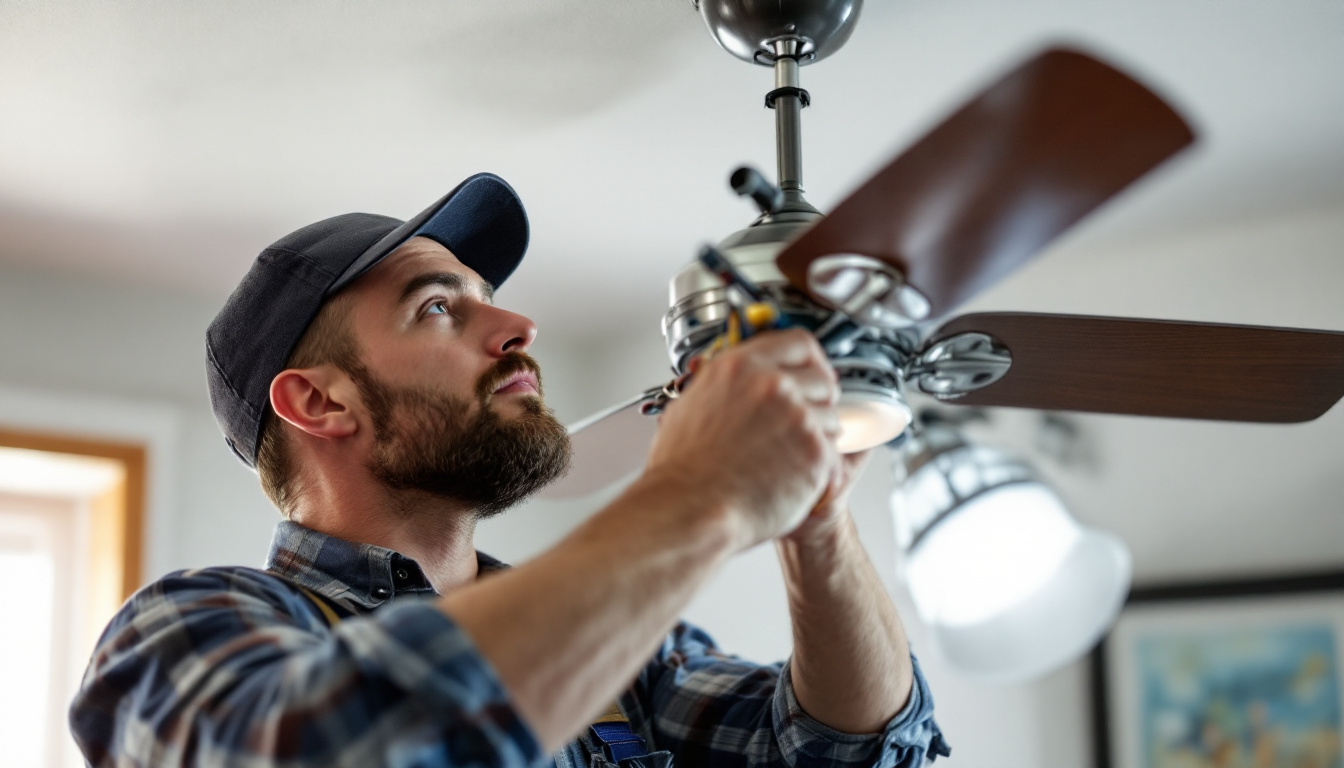
For lighting contractors, understanding the intricacies of fan parts replacement is essential to delivering quality service. Hunter fans, known for their durability and performance, often require part replacements to maintain optimal functionality. This article provides crucial insights into the replacement parts, common issues, and best practices for ensuring customer satisfaction.
Before delving into the specifics of parts replacement, it is important to have a comprehensive understanding of the various components that make up a Hunter fan. Each part plays a vital role in the overall performance and longevity of the fan. Familiarity with these components not only aids in maintenance but also enhances the overall user experience by ensuring optimal functionality.
The main components of a Hunter fan include the motor, blades, light kits, pull chains, and remote controls. Each of these parts can wear out over time, leading to decreased efficiency or complete failure of the fan. Understanding how these components work together is crucial for effective troubleshooting and replacement. For example, the motor is the heart of the fan, providing the necessary power to rotate the blades, while the blades themselves are designed to maximize airflow and minimize noise. The light kits, which can add both functionality and aesthetic appeal, often require specific bulbs that complement the fan’s design. Additionally, pull chains and remote controls offer different methods of operation, catering to user preferences and enhancing convenience.
Contractors often encounter several common issues when servicing Hunter fans. These can range from wobbling blades and noisy motors to flickering lights. Identifying the root cause of these problems is essential for effective repairs. For instance, a wobbling fan may indicate that the blades are misaligned or that the mounting bracket is loose, while a noisy motor could suggest that lubrication is needed or that the motor itself is failing. Furthermore, flickering lights can be indicative of electrical issues, such as loose wiring or a faulty light kit. Regular maintenance, including cleaning the fan blades and ensuring all connections are secure, can help prevent these issues from arising and prolong the life of the fan.
Another common problem that homeowners might face is the accumulation of dust and debris on the blades and motor. This not only affects the aesthetic appeal of the fan but can also lead to decreased efficiency and increased energy consumption. To combat this, it is advisable to establish a routine cleaning schedule, using a soft cloth or a duster to gently wipe down the blades and other components. Additionally, ensuring that the fan is installed at the correct height and angle can significantly improve its performance, as improper installation can lead to airflow obstructions and further complications.
Knowing when to replace parts is a critical skill for lighting contractors. Some issues can be resolved with simple adjustments, while others may require complete part replacement. Understanding the nuances of each component can save time and money, not only for the contractor but also for the client. This expertise can lead to enhanced customer satisfaction and long-term relationships, as clients appreciate contractors who can provide insightful recommendations based on their knowledge of the equipment.
Wear and tear can manifest in various ways. For instance, if the fan is making unusual noises or if the blades are not spinning smoothly, it may be time to consider part replacement. Additionally, if the fan is not providing adequate airflow, this could indicate a problem with the motor or blades that necessitates further investigation. Other signs to look out for include visible damage to the fan blades, such as chips or cracks, which can not only affect performance but also pose safety risks. Furthermore, if there are frequent fluctuations in performance or if the fan is drawing excessive power, these could be indicators of underlying issues that warrant a closer look.
When faced with a malfunctioning fan, contractors must assess whether replacing a part is more cost-effective than repairing the entire unit. This decision often hinges on the age of the fan and the availability of replacement parts. For older models, sourcing parts may be challenging, and in such cases, recommending a new fan might be the best option for the client. Additionally, contractors should consider the long-term energy efficiency of newer models, which can significantly reduce operational costs over time. By weighing the immediate costs against potential savings and improved performance, contractors can provide clients with informed choices that align with their budgets and needs. Moreover, discussing warranty options and the expected lifespan of new components can further assist clients in making a decision that feels right for their specific situation.
Understanding the essential replacement parts for Hunter fans is vital for any lighting contractor. Here are some of the most frequently replaced components.
Fan blades are among the most commonly replaced parts due to their exposure to wear and tear. Over time, blades can become warped or damaged, leading to inefficiency and noise. When replacing blades, it is crucial to select the correct size and style to ensure compatibility with the fan model. Additionally, it’s worth considering the material of the blades; options range from lightweight plastic to more durable wood or metal, each offering different aesthetics and performance characteristics. Choosing the right material can not only enhance the fan’s efficiency but also contribute to the overall decor of the room.
The motor is the heart of the fan, and when it fails, the entire unit becomes inoperable. Symptoms of motor failure can include buzzing sounds, overheating, or complete lack of movement. When replacing a motor, it is essential to choose a high-quality replacement that matches the specifications of the original motor to ensure optimal performance. Furthermore, understanding the type of motor—whether it’s a direct current (DC) or alternating current (AC) motor—can be crucial for ensuring energy efficiency and longevity. Upgrading to a more efficient motor can not only reduce energy consumption but also provide quieter operation, which is especially important in residential settings.
Light kits enhance the functionality of Hunter fans, providing illumination in addition to airflow. If the light kit is flickering or not working at all, it may require replacement. When doing so, ensure that the new light kit is compatible with the fan model and meets the client’s aesthetic preferences. Moreover, many modern light kits come with energy-efficient LED bulbs, which not only last longer but also consume significantly less energy than traditional incandescent bulbs. This shift towards LED technology can lead to substantial savings on energy bills over time and contributes to a more sustainable home environment. Additionally, some light kits offer adjustable brightness settings or color temperature options, allowing homeowners to customize their lighting to suit different moods and activities.
Having the right tools and techniques is crucial for efficient replacement of fan parts. Lighting contractors should be well-equipped to handle various repair scenarios.
Basic tools such as screwdrivers, pliers, and wrenches are necessary for most fan repairs. Additionally, having a multimeter can be helpful for diagnosing electrical issues. A ladder may also be required for accessing ceiling-mounted fans safely.
When replacing parts, following a systematic approach can enhance efficiency and ensure safety. Begin by turning off the power to the fan at the circuit breaker. Next, carefully remove the fan from its mounting bracket and disassemble the necessary components. Replace the faulty part, reassemble the fan, and test it to ensure proper functionality before restoring power.
To ensure successful fan repairs and replacements, lighting contractors should adhere to several best practices.
Maintaining detailed records of repairs and replacements can be beneficial for both contractors and clients. Documentation helps track the history of the fan, including previous issues and parts replaced. This information can be invaluable for future servicing and can enhance customer trust.
The lighting industry is constantly evolving, and staying informed about new products and updates from manufacturers like Hunter is essential. Regularly reviewing product manuals and attending industry workshops can provide valuable insights into the latest technologies and best practices in fan maintenance.
Effective communication with clients is paramount for lighting contractors. Educating customers about the importance of regular maintenance and timely repairs can foster long-term relationships and repeat business.
When discussing repairs or replacements with clients, it is important to set realistic expectations regarding timelines and costs. Providing a clear estimate and explaining the reasons behind the need for specific parts can help clients feel more informed and satisfied with the service.
Providing clients with maintenance tips can empower them to take better care of their fans. Simple recommendations, such as regular dusting of blades and checking for loose screws, can prolong the life of the fan and reduce the likelihood of future issues.
In the competitive field of lighting contracting, understanding Hunter fan parts replacement is a valuable asset. By familiarizing oneself with the components, recognizing signs of wear, and implementing best practices, contractors can ensure high-quality service and customer satisfaction. Through effective communication and education, contractors can build lasting relationships with clients, ultimately leading to a successful and sustainable business.
As the demand for ceiling fans continues to grow, so does the need for knowledgeable professionals who can provide expert repair and replacement services. By staying informed and prepared, lighting contractors can navigate the complexities of Hunter fan parts replacement with confidence.
Ready to elevate your lighting contracting services with the best in Hunter fan parts? Look no further than LumenWholesale for all your wholesale lighting needs. Our commitment to quality and affordability ensures you have access to the highest standard of lighting products, including those crucial fan components that keep your clients satisfied. Take advantage of our unbeatable wholesale prices, free shipping on bulk orders, and the convenience of cutting out the middleman. Choose LumenWholesale today and experience the perfect blend of quality, affordability, and convenience for your next project.

Discover the transformative world of affordable lighting solutions with our guide to discount lighting near you.

Discover how shopping deals on solar lights can significantly cut costs for lighting contractors.

Explore how home light automation is revolutionizing the industry for lighting contractors.

Explore the pros and cons of kitchen fluorescent light fixtures versus modern alternatives in this insightful guide.